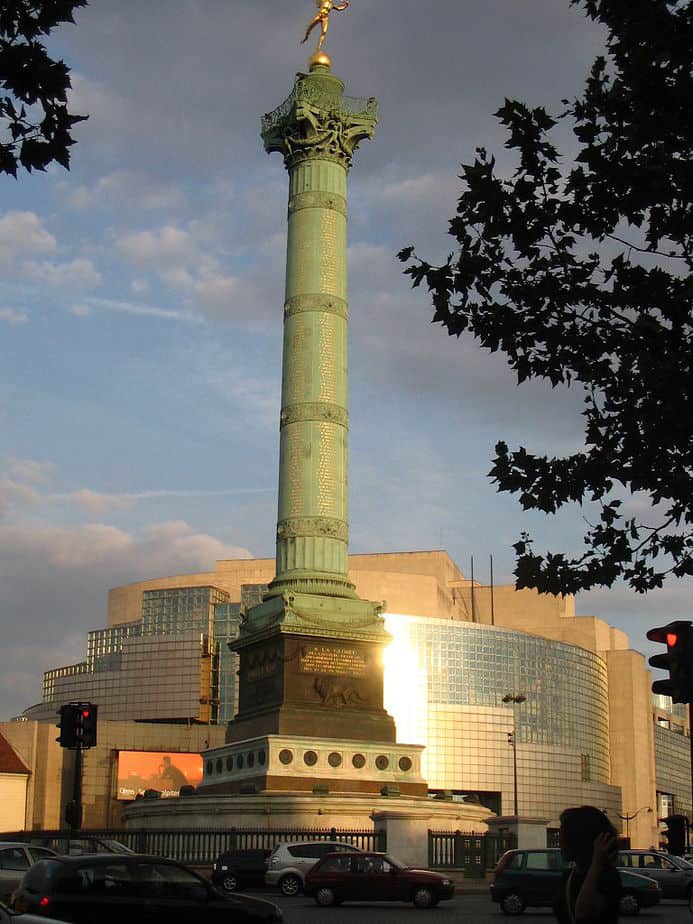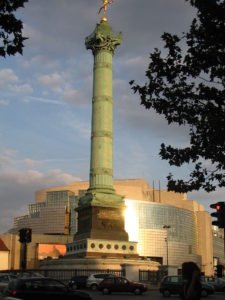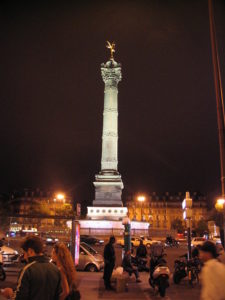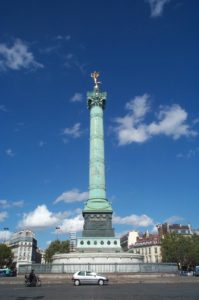Top 10 Facts about the Place de la Bastille
Top 10 Facts about the Place de la Bastille
In 1789, residents of Paris and insubordinate French officers raged the Bastille, freeing detainees and ammo. The occasion immediately turned into an image of the French Revolution, which prompted the overturning of the total government and the Ancien Régime.
The Bastille had gained notoriety for the hopeless conditions in which detainees were held, and gossipy tidbits flourished of their torment and murder. In any case, these are just aspect of the explanation the Bastille has held a spot in the mainstream creative mind for quite a long time, from the Alexandre Dumas Three Musketeers books (the D’Artagnan Romances) to Charles Dickens’ A Tale of Two Cities. Here are 10 realities about the Place de la Bastille.
1.The Bastille Column
The Bastille Column has nothing to do with the French Revolution of 1789. The Colonne de Juillet was raised at the previous area of the Bastille jail as a landmark to another insurgency that occurred in 1830. In this supposed July Revolution, which endured just three days, the French supreme government was at long last ousted.
French lord Charles X relinquished on August 2, 1830, and a sacred government was founded. The current segment remains as an image of freedom and a dedication to the individuals who participated.
It’s made of hefty cast drums and incorporates an inside twisting flight of stairs. Names of Parisians who passed on during 1830 upset are engraved in gold on the segment. On the section is the god Mercury with one leg on each side of a plated globe.
2. Place de la Bastille on Bastille Day
In France, Le Quatorze Juillet (Bastille Day, July 14) is commended with marches, firecrackers and moves, however, not many of them occur at Place de la Bastille. The Bastille Day military motorcade really begins from the Arc de Triomphe, at that point follows a course along Champs Elyées to Place de la Concorde. Firecrackers happen at night close by the Eiffel Tower.
In any case, the spot is the site of marches and exhibitions all through the remainder of the year. Due to its association with (capital-L Liberty, Place de la Bastille is the focal point of political activity in Paris when it riots with fights, discourses, and political conventions.
3. The advanced drama house at Place de la Bastille is a structure with a lot of interest.
Precisely 200 years after the well-known uproar that began the French Revolution, this milestone show house was introduced in 1989 by President Mitterrand. Today, it is the fundamental showplace of Paris, and one of the biggest in Europe. It isn’t, nonetheless, without debate.
Some underlying participants grumbled about the acoustics, others whined about the Burgundian stones tumbling off the sides of the structure. Whine as they would, yet every seat at the Opéra Bastille offers an unhindered perspective on the stage and each seat is quite often filled.
A few people incline toward the elaborate and iridescent enhancement of the more customary Palais Garnier, the previous drama house currently utilized generally for the move. It appears to be that although the French raged the Bastille at some level they incline toward the good old methodology. See with your own eyes. Today the Opera Bastille is home to numerous shows and ballet performances.
4. The Bastille was initially a sustained door and was later utilized as a regal depository.
The Bastille was worked as a sustained door to shield the east side of Paris from English and Burgundian powers in the Hundred Years’ War. The primary stone was laid in 1370 and the strongholds were extended throughout the years to make it an impressive post. In the hour of Henri IV of France (who ruled 1589 to 1610), the Bastille held the regal depository.
5. The English occupied Bastille.
After the English triumph at the Battle of Agincourt during the Hundred Years’ War, the English under Henry V involved Paris for a very long time, starting in 1420. The occupation power was positioned at the Bastille, the Louver, and the Chateau de Vincennes.
The Bastille was likewise involved by the Catholic League from 1588 to 1592, during a period of Catholic-Protestant strict war.
6. The Bastille housed VIP visitors before it was utilized as a jail.
After the Hundred Years’ War, the Bastille was utilized as a post yet additionally facilitated significant visitors of the ruler, for example, visiting dignitaries.
7. It was previously a feared jail, presently it’s just a section.
On July 14, 1789, 633 irate French residents raged the Bastille in Paris (a jail to some degree comparable to the Tower of London), catching its weapons, delivering its seven detainees, lynching the lead representative and destroying the post. This was the sensational beginning of the French Revolution.
8. Cardinal De Richelieu was the first to utilize The Bastille as a state jail.
The Cardinal de Richelieu (who shows up in Alexandre Dumas’ The Three Musketeers) founded the utilization of the Bastille as a state jail for the privileged as a feature of his centralization of influence under Louis XIII.
Many were detained for political or strict exercises. The Sun King, Louis XIV, based on this work on, utilizing the jail to confine his foes and the individuals who bothered him. Captures were made by lettre de cachet (a letter with the imperial seal) and could be made subtly and without legal cycle.
9. ‘The man in the iron veil’ was a genuine detainee held in The Bastille.
The Man in the Iron Mask, of the Alexandre Dumas tale of a similar name, and played by Leonardo DiCaprio in the 1998 film, depended on a genuine detainee held in the Bastille and somewhere else. The detainee’s name was supposed to be Eustache Dauger, yet his character was hidden with a veil of dark velvet all through his 34-year detainment, all in the guardianship of a similar corrections officer. Different detainees met or saw the strange man and the subject of his personality has propelled inescapable hypothesis from that point onward. Voltaire expounded on the detainee and implied that he knew something about the man’s personality.
10. Napoleon manufactured an elephant landmark on the site of The Bastille.
The Place de la Bastille housed a section and afterwards a wellspring in the years after the obliteration of the Bastille. Napoléon picked the square as the site of a landmark looking like an elephant; it was to be 78 feet in tallness and cast from the bronze of guns taken from the Spanish.
A mortar model was developed, yet the proposed bronze landmark never became. The mortar Elephant of the Bastille was finished in 1814 and remained at the site until 1846. A watchman named Levasseur is said to have lived in one of the elephant’s legs. The elephant shows up in Victor Hugo’s Les Misérables, in which it is depicted in a disintegrating condition of rot and utilized as a concealing spot by the road imp Gavroche.
Planning a trip to Paris ? Get ready !
These are Amazon’s best-selling travel products that you may need for coming to Paris.
Bookstore
- The best travel book : Rick Steves – Paris 2023 – Learn more here
- Fodor’s Paris 2024 – Learn more here
Travel Gear
- Venture Pal Lightweight Backpack – Learn more here
- Samsonite Winfield 2 28″ Luggage – Learn more here
- Swig Savvy’s Stainless Steel Insulated Water Bottle – Learn more here
Check Amazon’s best-seller list for the most popular travel accessories. We sometimes read this list just to find out what new travel products people are buying.














